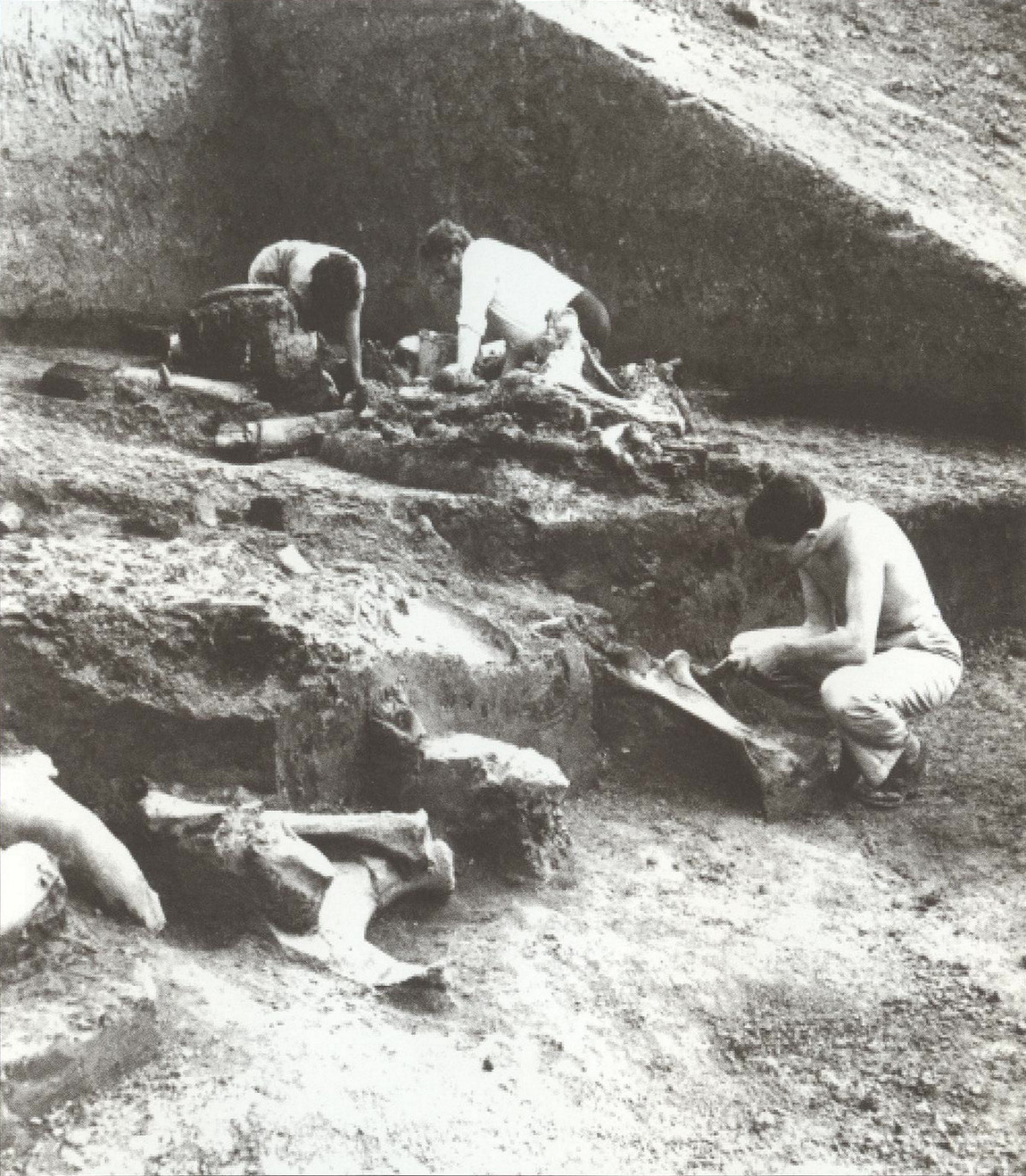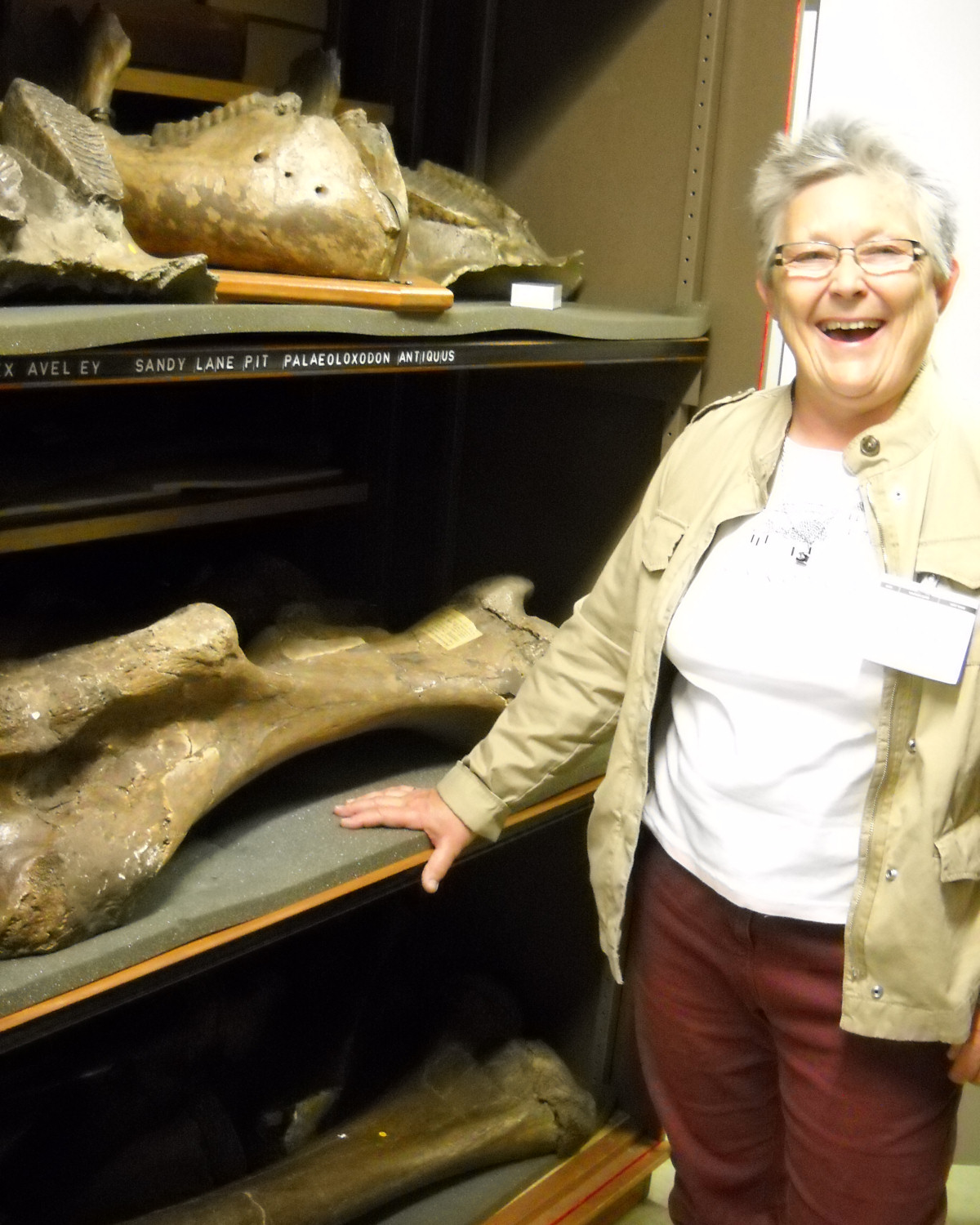The Aveley mammoth
In July 1964, whilst fossil hunting in Tunnel Cement's gravel pits in Sandy Lane, John Hesketh – an amateur geologist – found some large bones. He immediately contacted the Natural History Museum who sent Professor Antony J. Sutcliffe to inspect the site.[1]
The bones were the remains of a late form of steppe mammoth (Mammuthus trogontherii).[2]
Archaeologists from the Natural History Museum excavated the site and uncovered the most complete mammoth skeleton to be found in the UK. Incredibly, a junior straight-tusked elephant (Palaeoloxodon antiquus) was uncovered only 30cm (1ft) beneath the mammoth.[3]
The photograph below, provided courtesy of the Natural History Museum, shows the excavation of the fossils at Aveley in 1965.

The male steppe mammoth was between 2.8m to 3.40m (9ft to 11ft) tall and weighed between 6 and 7 tons. The females were slightly shorter at 2.61m to 2.92m (8.5ft to 9.5ft) in height and weighing a mere 4 tons. Their lifespan was approximately 60 years and they had curly tusks roughly 4.61m (15ft) long.[4]
The straight-tusked elephant was taller than the mammoth with males 4m to 4.3m (13ft to 14ft) in height weighing about 11 tons. They had straight tusks between 3.08m to 4.92m (10ft to 16ft).[5]
The skeletons were found side by side but they were separated by 30cm (12in) of sediment, which represented 50,000 years between their deaths. They were originally thought to date back 100,000 and 125,000 years respectively.[6] Recent improvements in dating techniques have shown that these animals died 200,000 and 250,000 years ago respectively.[7]
The skeletons were on display from 1970 to 1990 in the Natural History Museum in London. The display was rather unusual in that the animals were shown in the sediment/situation in which they were found. The usual practice at the time was to clean and reconstruct fossils.[8]
Both sets of remains are now stored in the palaeontology department of the Natural History Museum. In the photo below, provided courtesy of Susan Yates, shows Sue – Chair of Thurrock Local History Society – standing next to mammoth molars in the palaeontology department store room of the Natural History Museum.

At the same time, horse, bison, red deer, voles and white-toothed shrew were also found at the Aveley site. In February 1965, a further mammoth skeleton was found and another excavation carried out.[9]
Some years later, when digging foundations for the new A13 trunk road, the remains of a 200,000 year-old jungle cat were found. This animal existed around the same time as the Aveley mammoth, but today is found only in China and Asia. This shows how the climate and tundra have changed.
The remains of a large lion, a brown bear, wolf, rhinoceros, moles, bats and terrapins were also found in the area.[10]
References
Sources for this article were:
- [1] [2] Sutcliffe, Professor Antony J., palaeontology department, Natural History Museum of London (copy held in Thurrock Museum digital archives). Press release, August 1964.
- [3] [4] [5] [6] [7] [8] [9] [10] Sutcliffe, Professor Antony J. and Brewer Pip, keeper of palaeontology department, Natural History Museum of London (2013). Conversation with Susan Yates, Chair of Thurrock Local History Society, 7 May.
